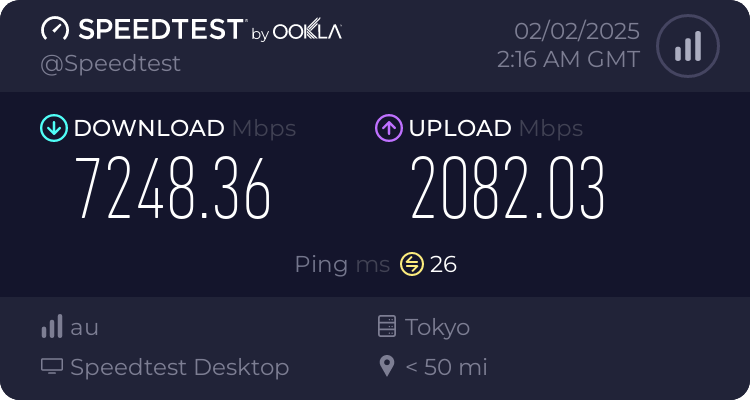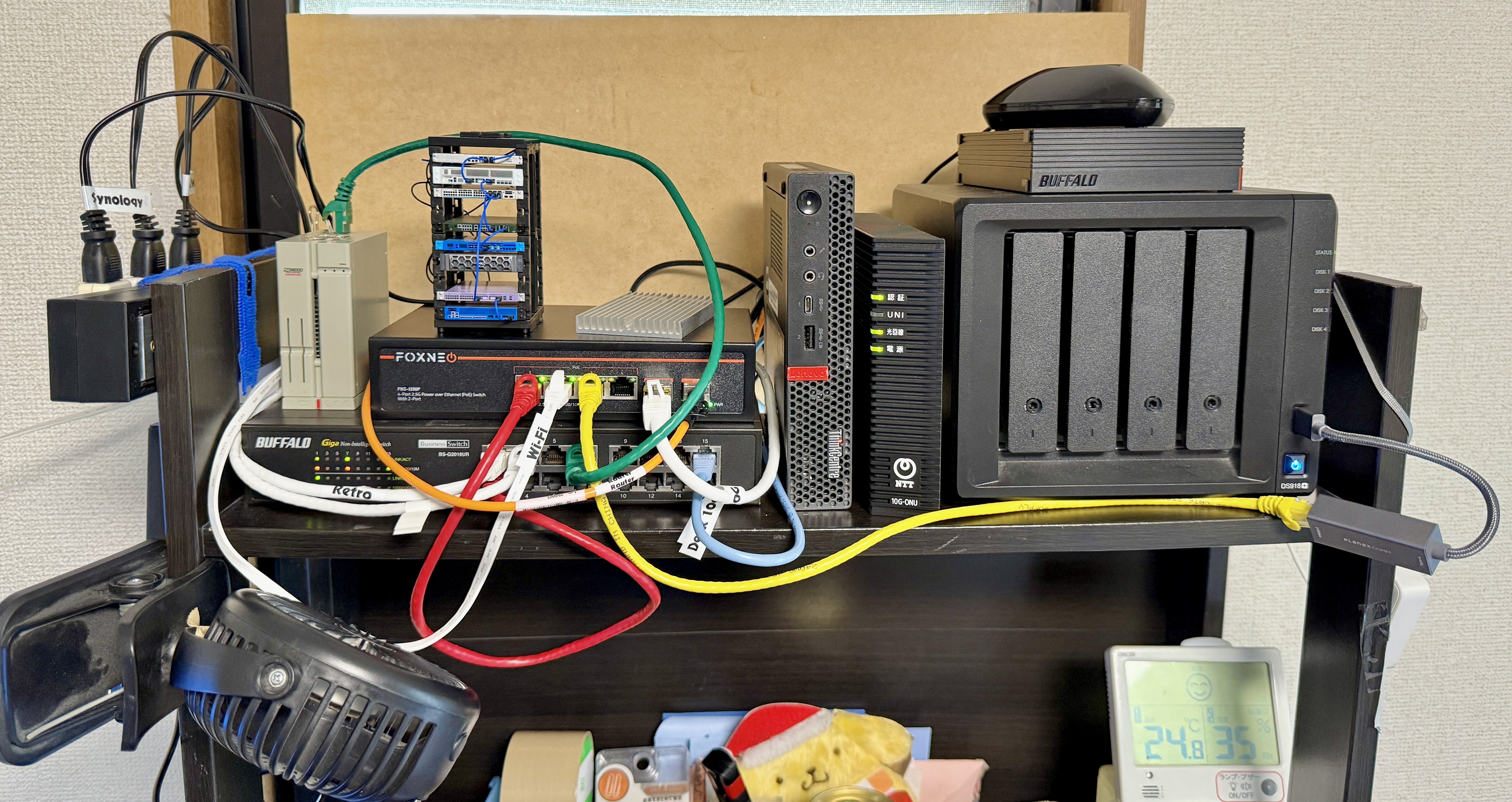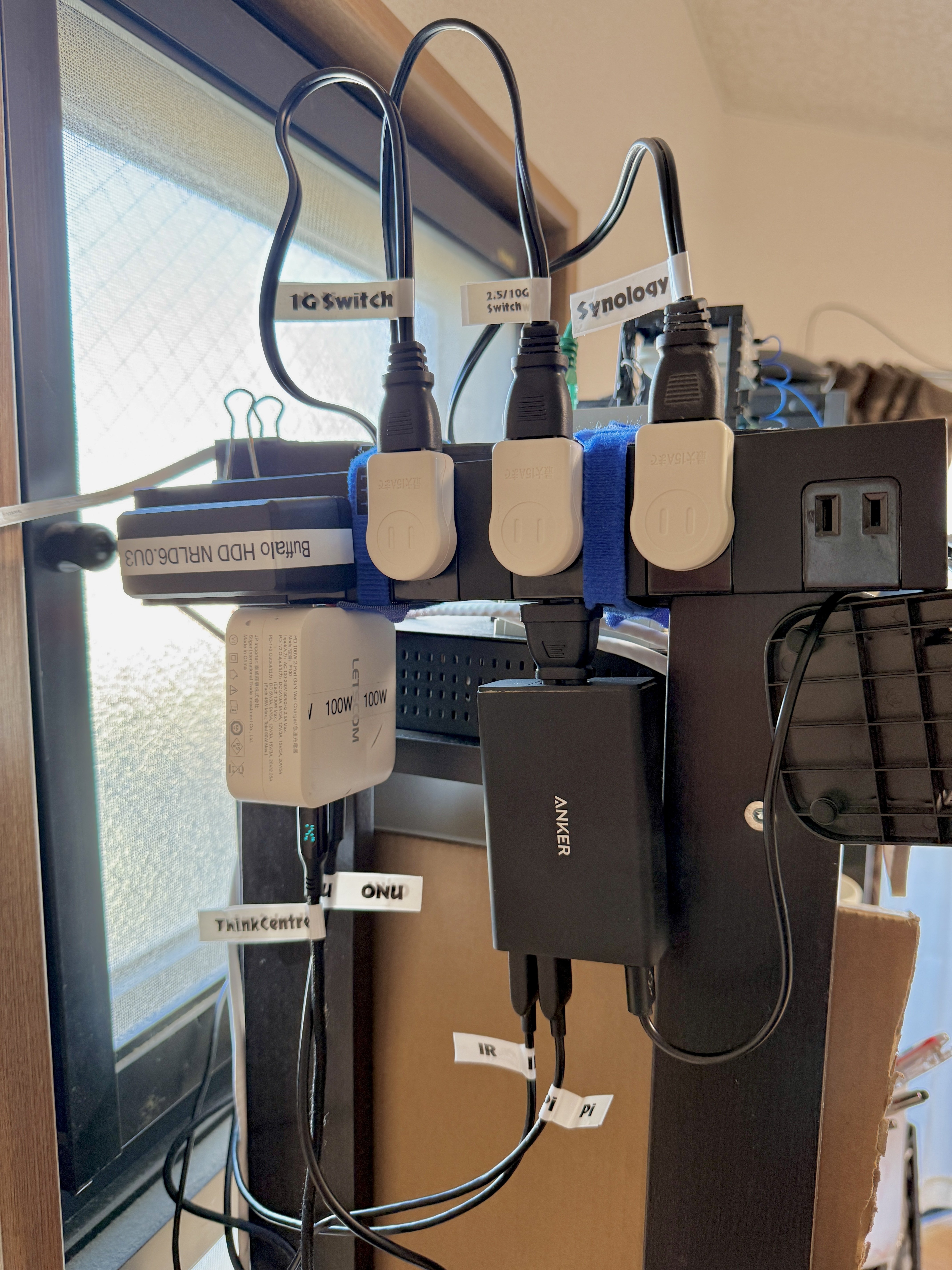In Japan they have a beacon system to track traffic congestion which works anonymously and lets offline car navigation systems have good-quality traffic info.
- 1 Post
- 30 Comments

 5·6 months ago
5·6 months agoFor what it’s worth, Synology Hybrid RAID is just a fancy GUI over linux mdraid, so the drives can be mounted on any Linux system (Synology even have instructions for how to do this on their website). You’ll be SOL mounting them with any kind of third-party NAS GUI that expects their own partition layout though.
This is why I’m still using a Synology ¯\(ツ)/¯
I can install all the fun stuff I want in Docker, but for the core OS services, it’s outsourced to Synology to maintain for me

 27·10 months ago
27·10 months agoI guess technically, yes


 2·10 months ago
2·10 months agoAll my stuff is running on a 6-year-old Synology D918+ that has a Celeron J3455 (4-core 1.5 GHz) but upgraded to 16 GB RAM.
Funny enough my router is far more powerful, it’s a Core i3-8100T, but I was picking out of the ThinkCentre Tiny options and was paranoid about the performance needed on a 10 Gbit internet connection

 1·10 months ago
1·10 months agoSame here in a Synology DS918+. It seems like the official Intel support numbers can be a bit pessimistic (maybe the higher density sticks/chips just didn’t exist back when the chip was certified?)

 5·10 months ago
5·10 months agoMost 720p TVs (“HD Ready”) used to be that resolution since they re-used production lines from 1024x768 displays

 2·11 months ago
2·11 months agoIt would be to replace my 4-bay Synology DS918 NAS with something with more drive bays and 10 Gbit connectivity
I recently got upgraded to 10 Gbit fiber at home so I’ve been through researching this stuff.
With a 3G WAN, I’d go with a 2.5 Gbit LAN - 2.5G equipment is quite affordable now. The next step is 5G but that equipment is rare, and 10G starts getting expensive.
Do you know what router they’re giving you? What LAN ports does it have? Does it even have a 2.5 or 10G LAN port or only 1G ports?
USB 2.5G adapters are available new for cheap and I’ve had good luck with them, even using one on a Synology NAS with an open source driver.
The wiring is probably fine as long as you don’t have any very long runs. I’d keep it and only replace it if the links randomly drop down in speed to 1G.
2.5G switches also aren’t too expensive. You can get one with only a few ports for the devices that can make use a lot of bandwidth (PC/NAS/Server) and plug your current switch into it for all the 1G devices like TVs, game consoles etc. The PiHole definitely doesn’t need a fast connection.
There isn’t a standard that is broadly-adopted, but NUT (https://networkupstools.org/) has reverse-engineered drivers for nearly every UPS out there, usually each brand has their standard so as long as the brand is supported it will work. (NUT is also what TrueNAS, Synology, QNAP, etc use internally for their UPS support)
I’ve had good luck with using NUT with APC UPSes (both consumer models and buying used enterprise rack-mount models).
One cool thing you can do with NUT is share the UPS state over the network, so that multiple machines can respond to the power state instead of just the machine that is plugged in via USB directly.
When I was following Synology communities closer, the common wisdom was that the expansion units weren’t great in either performance, stability or cost, and you were better off buying a new, bigger unit and then selling your old one used to recoup the cost difference.
I’m also in the same position, I have a DS918+ that is full. It’s also 6 years old and probably on the tail end of getting software updates so I’m weighing my choices…
It’s 6 years old now so I can’t really complain but even new ones don’t come with 2.5Gbe by standard, it seems that should be cheap enough to throw in there by now. At least a lot of the new ones can be upgraded internally to 10 Gbe.
It’s from a japanese Gacha machine! https://bitbang.social/@kalleboo/112755170852099746
Precisely, the rear ethernet is 1 Gbit, the USB adapter is 2.5 Gbit!

 14·1 year ago
14·1 year agoI just got 10 Gbit internet last week so I had a chance to tidy everything up. The ThinkCentre is the 10 Gbit router, the Synology actually hosts everything.

Also finally labeled all the mystery cables. Also replaced the proprietary 20V/12V bricks for the ThinkCentre and 10G Fiber ONU with USB-C adapter cables to keep things tidier.


 1·1 year ago
1·1 year agoHere are some results if anyone comes across this thread in the future.
The baseline result I need to achieve is a speedtest result of 7.5 Gbit that the ISP’s rental router gives me.
I ended up picking up:
- Lenovo ThinkCentre Tiny M720q, Core i3 8100T, 8 GB RAM ($70)
- Huawei SP310 (Intel X520-DA2/82599) dual 10 Gbit NIC ($20)
- 16x PCIe riser + Network Card Bracket ($20)
Initially I installed pfSense. I ran iperf3 to just get an initial sanity check that the PCIe card/wiring was working right but was getting results between 3-7 Gbit with the CPU pegging at 50%. Some quick googling returned results like “you can’t run iperf on pfSense!” and “pfSense isn’t a router, why do people keep using it as a router, it’s a firewall!”, so I decided to switch to OpenWRT since the Linux side of things always seems to make more sense.
On OpenWRT, iperf easily hit 9 Gbit with like the CPU at 95% idle.
It took like 2 hours to configure the weird IPIP6 tunnel my ISP uses for IPv4, but once it was set up, the machine has no trouble routing the same 7.5 Gbit speedtest the ISP router managed, with the CPU usage at 78% idle (the remainder in “sirq”)
Power consumption:
- ISP router draws a solid 16W both when it’s idle and when there is 7.5 Gbit of traffic
- The M720q draws 16W when idle and up to 29W when there is 7.5Gbit of traffic. This is with two copper SFP+
- This is without tweaking any power saving options in BIOS etc

 1·1 year ago
1·1 year agoI can only look at Mikrotik gear in jealousy since they don’t have a reseller here, so all that’s available are overpriced, un-warrantied gray imports…

 1·1 year ago
1·1 year agoVery interesting, thanks for the links
What I did in the living room was plug a USB-C dock with a 2.5 Gbit Ethernet adapter into the wall outlet with a 2 meter USB-C 3.x cable.
So I sit down in the living room and plug in my laptop/phone in to charge when I’m using it and they automatically get a 2.5 Gbit network connection. Even iOS natively supports the common Realtek 2.5 Gbit chipset.